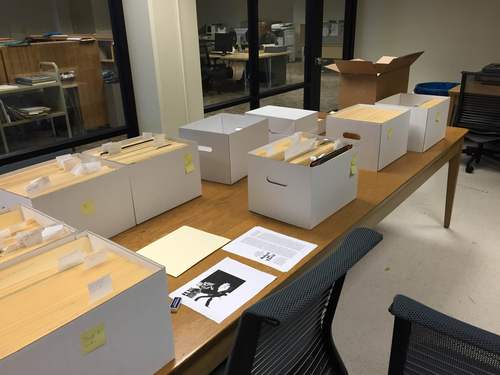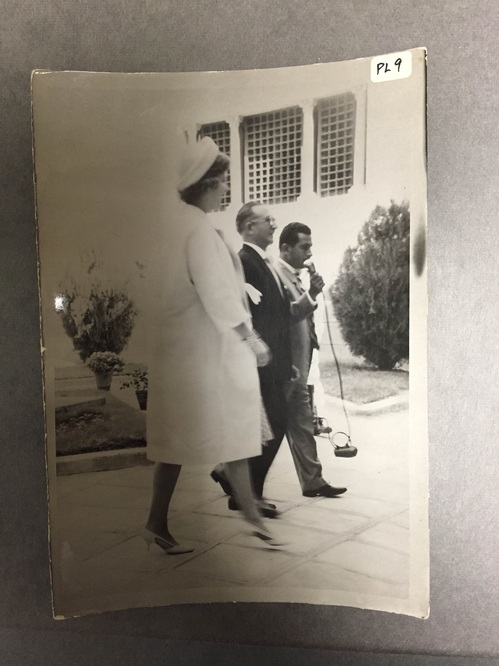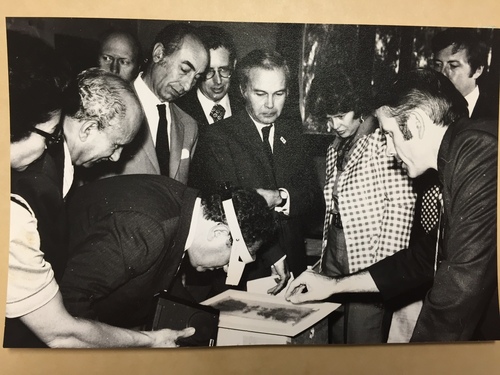Well, my time here as a CCEPS Fellow is nearing its end. Last week all three of us CCEPS Fellows had the pleasure of giving a presentation on what we have been doing the past semester. Giving a presentation is a fantastic way to punctuate our time at CCEPS. It allowed us to give our own insight into the work we have been doing behind the “glass wall” and what it has meant to us individually.
It’s Been a While
Hello to all! First, I must apologize for my absence on this blog as our spring break was last week and it would have been unfair of me to create a post without any substance. This post will take a different tone than in my previous posts. This entry will be centered about the technical and organizational aspect of being an archivist, an often looked over area of the archiving world.
Half Way There
I have just realized that we have just about hit the half way point in my time as a CCEPS Fellow. While we have have finished a great deal of the IAC Collection there remains a great amount of details that need to be addressed before the collection is ready to be used by researchers. I am currently in the midst of placing everything in the proper order and preparing to write up a good finding aid for the collection. Now that I have raced you through the technical side of archiving, I can bring you to the interesting bits and pieces of history.
Rainy Day Files
Hello Again!
Well, another week has passed and I am still in disbelief of
how quickly the days go by. This week is starting off with rain trickling down
the windows of the library but I am looking through the window of history today!
(Please excuse the cheesy cliché) As promised, I have a couple of interesting
snapshots of the hundreds of pictures I have been combing through. Most
recently I have been reorganizing the series on the Nag Hammadi dig and the
surrounding work involved in such a monumentally historic project. This had
included everything from field logs of the dig sites, pictures of the
surrounding towns and landscape, and a plethora of amazing records documenting
the whole process.
Going through this series in the IAC Nag Hammadi Collection
has afforded me the opportunity to see a different time and place through the
eyes of both the locals and scholars involved with the excavation and scholarly
analysis.
One of the amazing photos included in the series are of the
discoverer of the codices, Muhammad Ali and his mother.
Ali standing next to his mother (dressed in black).
The mother of Ali had actually burned one of the codex books upon their initial discovery. Unfortunately, there was no other information on
the reasons for his mother burning one of the books but one can just imagine
what was going through the minds of the IAC scholars upon hearing this story!
And as I mentioned in one of my previous posts I am
including just one picture of Henry Kissinger from his tour of the Nag Hammadi
Codices. He is intently studying pages of ancient texts while members of the
project explain what is written and the significance to ancient Christianity.
There are pieces of history hidden all around us and it is
up to us, historians and others alike, to document that history so others have
the opportunity to look through the window of the past.
Time Flies By
Something that we tend to forget about time is that it can slip right by you when not paying attention. Paying attention to time is all I have been doing while processing the IAC Nag Hammadi collection. But not in the same way that people do while sitting in a classroom or at work. I have been paying close attention to the time that has been captured inside of these files and boxes.
First Insight
My first
week as a CCEPS fellow has ended as quickly as my second week begins and what a
week it has been so far! The enthusiasm I have for this work is a benchmark by
how I will be continuing through the weeks until my time here is up. What I
have learned so far and what I still have to learn excite me beyond the words
necessary to write a short blog. Lessons learned in my Archives 310 class last
year are now being applied, tested, and refined through the incredible
opportunity of processing a collection first hand. This collection in
particular, the Institute for Antiquity and Christianity Records, have been
fascinating so far, especially the level of details and records that came with
the Nag Hammadi collection. It is an amazing collection of correspondence,
pictures, maps, and lectures that all describe in remarkable detail the efforts
of many to make these ancient texts come to life for dignitaries and normal people
alike to enjoy. In one of the dozens of picture folders that I went through, I
found an impressive set of photographs showing the visit of one dignitary to
the small world of Claremont. That individual was Henry Kissinger, captured in a
candid moment that made it seem as though he were picking his nose. This
contrast of this imposing world figure and the candid nature of a man looking
at a museum exhibit is exactly what makes me extremely happy and thankful to be
a CCEPS fellow and for the ability to find the extraordinary hidden in the
files of archival collections.





